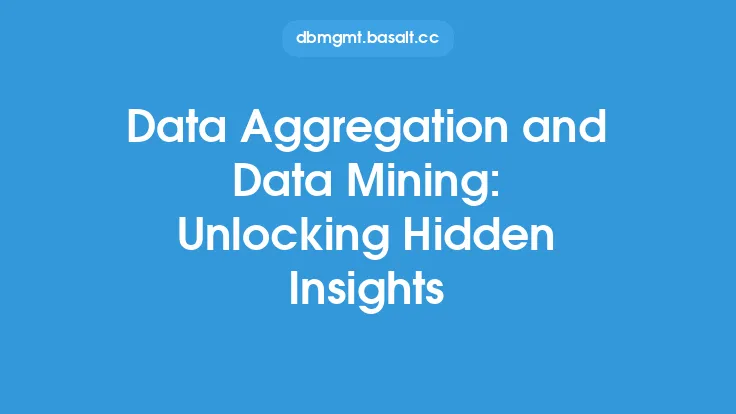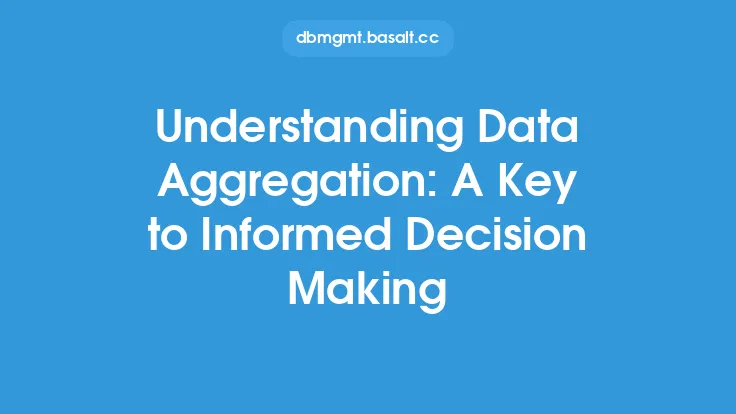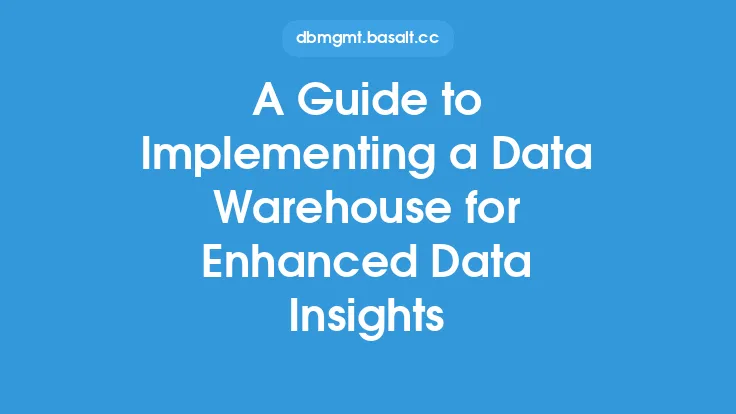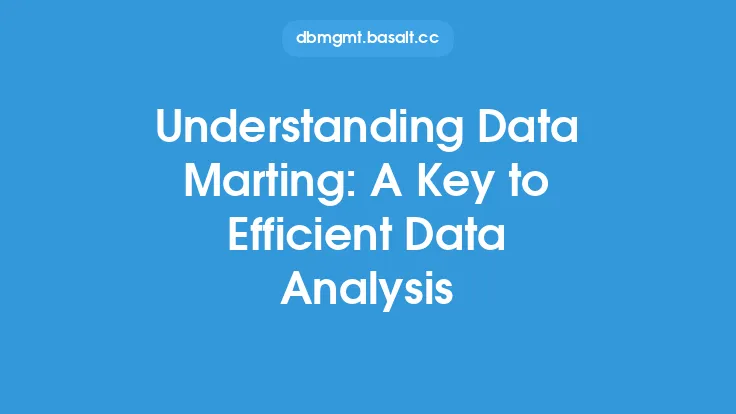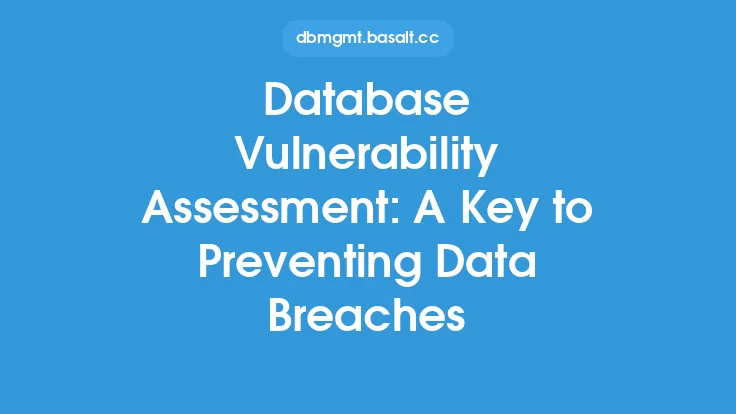Data normalization is a crucial process in data management that ensures data is consistent, accurate, and reliable. One key aspect of data normalization is data disaggregation, which involves breaking down complex data sets into smaller, more manageable components. This process is essential for unlocking hidden insights and gaining a deeper understanding of the data. In this article, we will delve into the world of data disaggregation, exploring its importance, techniques, and applications.
Introduction to Data Disaggregation
Data disaggregation is the process of decomposing complex data sets into smaller, more granular components. This involves breaking down aggregated data into its constituent parts, allowing for a more detailed analysis of the data. Data disaggregation is essential for identifying patterns, trends, and relationships that may not be apparent when looking at the data in its aggregated form. By disaggregating data, organizations can gain a more nuanced understanding of their data, making it easier to identify areas for improvement and optimize business processes.
Benefits of Data Disaggregation
The benefits of data disaggregation are numerous. One of the primary advantages is that it allows for a more detailed analysis of the data. By breaking down complex data sets into smaller components, organizations can identify patterns and trends that may not be apparent when looking at the data in its aggregated form. This can lead to new insights and a deeper understanding of the data, enabling organizations to make more informed decisions. Additionally, data disaggregation can help to reduce errors and inconsistencies in the data, improving the overall quality and accuracy of the data.
Techniques for Data Disaggregation
There are several techniques that can be used for data disaggregation, including data partitioning, data grouping, and data filtering. Data partitioning involves dividing the data into smaller subsets based on specific criteria, such as date, location, or product category. Data grouping involves combining similar data elements into a single group, allowing for a more detailed analysis of the data. Data filtering involves selecting specific data elements based on certain criteria, such as data values or data ranges. These techniques can be used individually or in combination to achieve the desired level of data disaggregation.
Data Disaggregation in Data Warehousing
Data disaggregation plays a critical role in data warehousing, where it is used to transform raw data into a format that is suitable for analysis. Data warehousing involves the process of extracting data from multiple sources, transforming it into a consistent format, and loading it into a centralized repository. Data disaggregation is an essential part of this process, as it allows for the creation of a detailed and granular view of the data. This enables organizations to analyze the data in a more detailed and nuanced way, gaining new insights and a deeper understanding of the data.
Data Disaggregation and Data Mining
Data disaggregation is also closely related to data mining, which involves the process of discovering patterns and relationships in large data sets. Data mining relies heavily on data disaggregation, as it requires the data to be broken down into smaller, more manageable components. This allows data mining algorithms to identify patterns and relationships that may not be apparent when looking at the data in its aggregated form. By applying data mining techniques to disaggregated data, organizations can gain new insights and a deeper understanding of the data, enabling them to make more informed decisions.
Challenges and Limitations of Data Disaggregation
While data disaggregation is a powerful tool for unlocking hidden insights, it is not without its challenges and limitations. One of the primary challenges is the risk of data overload, where the sheer volume of data becomes overwhelming. This can make it difficult to identify patterns and trends, and may require the use of specialized tools and techniques to manage the data. Additionally, data disaggregation can be a time-consuming and resource-intensive process, requiring significant expertise and resources. Furthermore, data disaggregation may also raise concerns about data privacy and security, as the process of breaking down complex data sets into smaller components can potentially expose sensitive information.
Best Practices for Data Disaggregation
To overcome the challenges and limitations of data disaggregation, it is essential to follow best practices. One of the primary best practices is to define clear goals and objectives for the data disaggregation process. This involves identifying the specific insights and outcomes that are desired, and ensuring that the data disaggregation process is aligned with these goals. Additionally, it is essential to use specialized tools and techniques, such as data visualization and data mining algorithms, to manage and analyze the data. Furthermore, data disaggregation should be performed in a way that ensures data privacy and security, using techniques such as data anonymization and encryption to protect sensitive information.
Conclusion
In conclusion, data disaggregation is a powerful tool for unlocking hidden insights and gaining a deeper understanding of complex data sets. By breaking down aggregated data into smaller, more granular components, organizations can identify patterns, trends, and relationships that may not be apparent when looking at the data in its aggregated form. While data disaggregation is not without its challenges and limitations, following best practices and using specialized tools and techniques can help to overcome these challenges. As data continues to play an increasingly important role in business decision-making, the importance of data disaggregation will only continue to grow, making it an essential skill for data analysts and business leaders alike.
